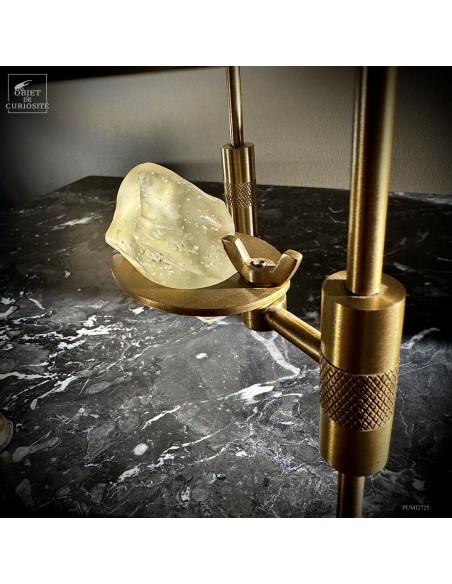- New
Libyan desert glass under magnifier
PUMI2725
his fragment of Libyan glass shows a pale yellow, translucent hue. Its appearance is far from the transparency of ordinary glass, and it reveals the brutal force that led to the creation of this fascinating material.
In the Libyan desert about 29 million years ago, this natural glass — called impactite—was formed when silica (sand) melted under the effect of extreme heat caused by a meteorite that allegedly exploded before reaching the ground: since there is no visible crater. the liquid melt was scatered on 6500Km², between Egypt and Libya.
The fragment is held by a brass clamp, under a magnifying glass on brass legs that invites you to observe closely its inclusions of sand grains, when it has fallen again still liquid.
Touthankamon had on his pectoral a sacred scarab sculpted in Libyan glass, 3400 years ago.
A natural and cosmic curiosity, at the crossroads of geology and astronomy.
In the Libyan desert about 29 million years ago, this natural glass — called impactite—was formed when silica (sand) melted under the effect of extreme heat caused by a meteorite that allegedly exploded before reaching the ground: since there is no visible crater. the liquid melt was scatered on 6500Km², between Egypt and Libya.
The fragment is held by a brass clamp, under a magnifying glass on brass legs that invites you to observe closely its inclusions of sand grains, when it has fallen again still liquid.
Touthankamon had on his pectoral a sacred scarab sculpted in Libyan glass, 3400 years ago.
A natural and cosmic curiosity, at the crossroads of geology and astronomy.


















